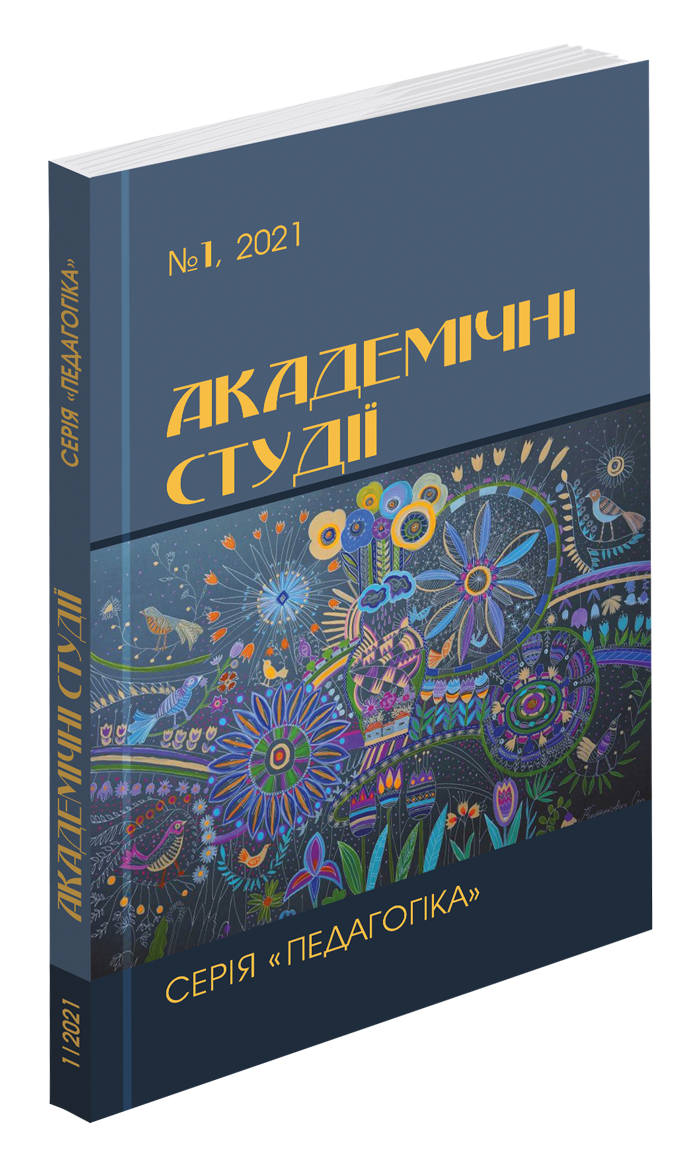Abstract
The article considers the concept of coaching as a modern technology for success in the field of voice and choral activities of the future music teacher. It is characterized its semantic significance, historical aspect of development, main spheres of functioning. The essence and approaches of coaching are outlined that provide basic principles, such as: partnership, non-evaluative, research interaction, stimulation of thought and creative processes, focusing on revealing the inner potential of the future specialist. It is analyzed the main types of coaching models to ensure effective interaction. Peculiarities of their integration into the educational process and the possibility of introducing coach technology in the conditions of voice and choral activity are determined. The main resources that help to achieve the ultimate goal and eliminate possible obstacles to the transformation of personality are identified. The dependence of success on the development of emotional intelligence, namely the influence of the emotion of fear on the learning process, work on positive thinking. It is considered the place of a teacher-coach in the organization of educational process, its influence on the level of realization of creative potential of the students, conditions of strengthening of communication synchrony and emotional involvement between them. It is offered the strategy of step-by-step personal and professional development of the future music teacher. The strategy emphasizes on learning productivity, change of established algorithms of the behavior, positive emotional state, motivation for self-development, self-regulation, self-improvement and creative realization. The conditions for successful implementation of coaching as a pedagogical technology in the process of voice and choral training are determined. Everything mentioned above contributes to the acquisition by students of such key components of professional competence as: subject-technological, psycho-pedagogical, general cultural.
References
Ґоулман Д. Емоційний інтелект. Харків : Віват, 2019. 512 с.
Лев Н.Ю., Бала Р.Д. Моделі коучингу: характеристика та особливості застосування. Вісник Нац. ун-ту «Львів. Політехніка». 2012. № 727. С. 76–81.
Нежинська О.О., Тименко В.М. Основи коучингу : навчальний посібник. Харків : ТОВ «ДІСА ПЛЮС», 2017. 220 с.
Романова С.М. Коучінг як нова технологія в професійній освіті. Вісник Нац. авіац. ун-ту. Серія: Педагогіка. Психологія. 2010. Вип. 3. С. 83–86.
Сидоренко В.В. Педагогічний коучинг як інноваційна технологія науково-методичного супроводу професійно-особистісного розвитку вчителя в системі післядипломної освіти. Наукова скарбниця освіти Донеччини. Донецьк, 2014. № 3 (14). С. 13–19.
Kretlow, A.G., Wood, C.L., Cooke, N.L. (2011). Using In-Service and Coaching to Increase Kindergarten Teachers’ Accurate Delivery of Group Instructional Units. The Journal of Special Education, 44(4), 234–246 URL: https://doi.org/10.1177/0022466909341333.
Shannon D.K., Snyder P.A, Hemmeter M.L, McLean M. (2021). Exploring Coach–Teacher Interactions Within a Practice-Based Coaching Partnership. Topics in Early Childhood Special Education. 40(4), 229–240 URL: https://doi:10.1177/0271121420910799.
Varvarigou М., Durrant С. (2011). Theoretical perspectives on the education of choral conductors: A suggested framework. British Journal of Music Education, 28, 325–338. URL: https://doi:10.1017/S0265051711000325.
